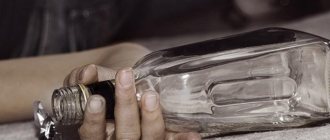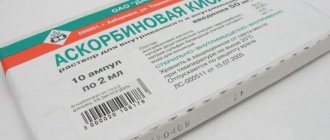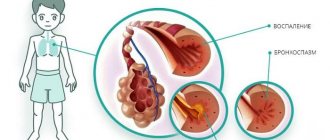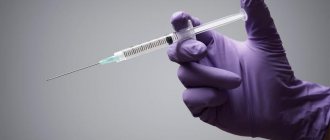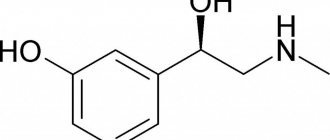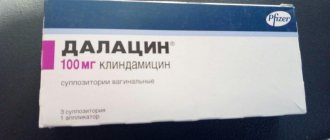Composition of the drug
Composition of the medicine for injection into a vein: haloperidol (active ingredient), lactic acid, water. One ampoule contains 5 mg of active substance.
Components of the solution for injection into the muscle: haloperidol decanoate (active ingredient), phenylcarbinol (15 mg), sesame oil (up to 1 ml). There are 70.52 mg of active substance per 1 ml.
The solution is a transparent, colorless liquid substance. Light staining or opalescence is acceptable.
Release form and composition
Dosage forms of Haloperidol are tablets for oral administration and solution for intravenous and intramuscular administration.
Each tablet contains:
- 1.5 mg or 5 mg haloperidol;
- Inactive ingredients: medical gelatin, potato starch, magnesium stearate, lactose (milk sugar), talc.
Haloperidol tablets are sold in 10 pcs. in blister packs and 100 pcs. in polymer jars.
1 ml of solution contains:
- 5 mg haloperidol;
- Additional components: 90% lactic acid, injection water.
Haloperidol solution is sold 1 ml in dark glass ampoules, 10 ampoules in a blister pack, 2 pcs. in a cardboard box.
pharmachologic effect
Haloperidol is a potent neuroleptic (or antipsychotic) belonging to the butyrophenone group. The medicine relieves nervous tension and has a pronounced calming effect in a number of mental disorders, such as schizophrenia.
Main actions of the drug:
- sedative;
- antiemetic;
- antipsychotic.
In this case, the antipsychotic effect is pronounced, while the sedative effect is moderate. The use of the drug in small doses, on the contrary, has an activating effect. Haloperidol enhances the effect of sleeping pills, narcotics, analgesics and other medications that inhibit the function of the central nervous system.
The medicine helps restore the balance of neurotransmitters in the brain. The effects are achieved by blocking dopamine receptors in the mesocortex and limbic system. The substance acts mainly on D2 receptors and has some effect on 5-HT2 and α1 receptors. There is also an effect on D1 receptors, but it is insignificant.
The medicine affects the functioning of the basal ganglia, and therefore may provoke disturbances in motor activity and motility (so-called extrapyramidal reactions).
Inhibition of dopamine receptors in the hypothalamus causes increased synthesis of prolactin and, as a result, a decrease in body temperature and galactorrhea (excretion of breast milk in men and women not during lactation). Blockade of receptors in the trigger zone of the vomiting center provides an antiemetic effect.
After intramuscular injection, the maximum concentration of the active substance in the blood is reached after 20 minutes. 90% of it is bound to proteins, the rest circulates in the form of free fractions. The concentration of Haloperidol in plasma is 12 times higher than its content in erythrocytes. A large proportion of the injected substance is concentrated in the tissues; it tends to accumulate. The half-life after intramuscular injection is from 17 to 25 hours, after injection into a vein – from 10 to 19.
Metabolism occurs in the liver, producing inactive metabolites. 60% of the substance is excreted through the intestines, the remaining part through the urinary system.
Drug interactions Haloperidol decanoate
Thyroxine increases the toxicity of haloperidol, therefore, in patients with hyperthyroidism, haloperidol can only be used under the guise of adequate thyreostatic therapy. If there is a need for simultaneous antiparkinsonian therapy for the patient, a break should be taken after the last dose of Haloperidol decanoate, given its prolonged effect. The drug can enhance the effect of central nervous system depressants - alcohol, sedatives and hypnotics, as well as narcotic analgesics. Concomitant use of haloperidol with these drugs may cause respiratory depression. Enhances the effect of methyldopa on the central nervous system. Reduces the antiparkinsonian effect of levodopa. Haloperidol decanoate inhibits the metabolism of tricyclic antidepressants, so their levels in the blood plasma may increase with increased anticholinergic effects, as well as toxicity, including in relation to the cardiovascular system. Pharmacokinetic studies revealed a moderate or moderate increase in the concentration of haloperidol in the blood serum when used simultaneously with quinidine, buspirone, and fluoxetine. If their combined use is necessary, a reduction in the dose of haloperidol may be necessary. With long-term use of drugs that have the properties of liver enzyme inducers (carbamazepine, rifampicin, phenobarbital, etc.), the concentration of haloperidol in the blood decreases. Therefore, if their combined use is necessary, an increase in the dose of haloperidol may be required. In case of subsequent discontinuation of therapy with these drugs, the advisability of reducing the dose of Haloperidol decanoate should be kept in mind. Rarely, with the combined use of Haloperidol decanoate and lithium salts, encephalopathy, extrapyramidal symptoms, tardive dyskinesia, neuroleptic malignant syndrome, brain stem symptoms, and coma were noted. In most cases, such disorders are reversible. The reason for their manifestation in this situation is not clear. If these disorders occur, you should immediately stop using Haloperidol decanoate. Haloperidol may reduce the effectiveness of oral anticoagulant therapy. Haloperidol inhibits the action of epinephrine and other sympathomimetics, and also reduces the effectiveness of antihypertensive adrenergic blocking agents.
Indications and contraindications
Indications for use:
- schizophrenia;
- delusions, visual and auditory hallucinations;
- acute and chronic psychoses, including manic-depressive, epileptic, alcoholic, medicinal;
- mania and paranoid states;
- agitated depression;
- oligophrenia;
- Tourette's syndrome;
- Huntington's disease;
- tics;
- aggressiveness;
- suicidal thoughts;
- slurred speech caused by mental disorders;
- psychomotor agitation;
- prolonged vomiting or hiccups that do not respond to treatment;
- behavioral disorders, including in the elderly and children (hyperactivity, autism and others).
528281522
The drug gives positive results in disorders with social withdrawal. In many patients, social behavior returns to normal.
Can be prescribed as an adjuvant for chronic pain.
Haloperidol is used for premedication before surgery.
Haloperidol injections are strictly contraindicated in the following cases:
- depression;
- Parkinson's disease;
- being in a coma (of any origin);
- depression of the central nervous system resulting from a course of medications or alcohol;
- disorders of the central nervous system (CNS), which are accompanied by pyramidal signs or extrapyramidal syndrome;
- damage to the subcortical nuclei;
- period of bearing a child;
- breastfeeding period;
- age less than three years;
- allergy to the components of the medicine.
The drug should be carefully prescribed to those suffering from alcoholism, as well as to patients with epilepsy, hyperthyroidism, prostate adenoma, vascular and cardiac dysfunction, renal and liver failure, respiratory and pulmonary heart failure (including acute infectious lesions).
The drug can also negatively affect the course of angle-closure glaucoma.
It is not recommended to prescribe Haloperidol to people taking medications that prolong the QT interval.
Overdose of the drug Haloperidol decanoate, symptoms and treatment
With parenteral use of the long-acting drug (Haloperidol decanoate), the likelihood of overdose is lower than with oral use of haloperidol. If an overdose of Haloperidol decanoate is suspected, the prolonged nature of the drug's action should be taken into account. The main signs of overdose: severe extrapyramidal disorders (muscle rigidity, possible muscle hypertonicity, generalized or local tremor), arterial hypotension or hypertension (arterial hypertension), severe lethargy. In some cases, coma with respiratory depression may develop against the background of severe arterial hypotension. Ventricular arrhythmias may occur with prolongation of the QT . There is no specific antidote. Symptomatic therapy is carried out: the stomach is washed, activated charcoal is used. In a comatose state, the function of the respiratory system is supported, if necessary, with the use of a ventilator. Monitoring of ECG and critical hemodynamic parameters is necessary. To treat patients with severe arterial hypotension or circulatory failure, it is necessary to administer a sufficient volume of fluid, blood plasma or concentrated albumin intravenously, as well as the administration of vasopressive agents (norepinephrine or dopamine). Epinephrine should not be used because in combination with haloperidol it can cause paradoxical hypotension. For severe extrapyramidal disorders, antiparkinsonian drugs are prescribed parenterally.
Instructions for use of Haloperidol in ampoules
The method of administration depends on the type of drug and indications. The oil solution should absolutely not be injected into a vein.
Mode of application
The medicine is available in the form of tablets and ampoules. In the latter case, the drug is administered intravenously or intramuscularly into the gluteal region.
Dosage regimen and overdose
The dosage is selected individually by the doctor. The dose volume depends on the symptoms, severity of the disease and the fact of taking other antipsychotics.
General recommendations:
- primary doses – from 0.1 to 1.3 ml once every 28 days. The initial dose of the solution should be 10-15 times higher than the dosage of Haloperidol in tablets, but not more than 100 mg;
- Elderly patients and people with mental retardation are advised to take 0.1-0.3 ml of solution. The maximum daily dose is 1 ml;
- Children from three years of age are prescribed 0.025-0.05 mg per day, dividing the dosage into two doses. The permitted daily dose depends on body weight and is calculated as 0.15 mg per kilogram;
- in case of psychomotor agitation, the drug is administered intramuscularly at a dose of 2-5 mg two to three times a day. For intravenous administration, the same dose is diluted in 10-15 ml of water. No more than 60 mg of the drug is allowed per day.
Depending on the progress of treatment, the dosage can be increased.
When the desired therapeutic effect is achieved, the patient is transferred to oral administration of the medication. The faster the transition occurs, the better.
If the dose exceeds 3 ml, the patient may feel unpleasant swelling in the injection area.
The maximum permissible doses are from 300 to 1000 mg.
Side effects
The most common side effects:
- sleep disorders;
- anxiety, causeless worries and fears;
- headache;
- depression;
- akathisia;
- epileptic seizures;
- euphoria;
- exacerbation of symptoms of the disease in schizophrenia and psychosis;
- lethargy.
With a long course, extrapyramidal disorders, increased sweating, increased and difficult breathing, a decrease and increase in blood pressure may occur. The severity of extrapyramidal manifestations depends on the amount of medication taken daily; often, to relieve such symptoms, it is enough to change the treatment regimen and reduce the daily dose.
Regular high dosages can provoke:
- problems with the cardiovascular system (arrhythmia and tachycardia, decreased blood pressure, symptoms of ventricular fibrillation, prolongation of the QT interval);
- disorders of the gastrointestinal tract (weak appetite, vomiting and nausea, increased dry mouth, problems with stool, problems with liver function);
- problems with the hematopoietic system (decrease in the number of red blood cells, increase in the number of monocytes, rarely - agranulocytosis);
- disorders of the urinary and reproductive systems (swelling of the extremities, urinary retention, menstrual irregularities, priapism, increased libido and weakened potency, increased levels of prolactin in the blood, gynecomastia);
- metabolic disorders (hyponatremia, hyper- or hypoglycemia);
- skin reactions (photodermatitis, acne, rash).
Visual acuity may decrease. In rare cases, retinopathy and cataracts develop.
Cases of weight gain and hair loss have been reported.
If errors are made in the therapeutic regimen, there is a risk of death. However, such cases are rare.
It is important to know that increased dosages or prolonged use of the drug can provoke serious and irreversible movement disorders. Symptoms of the onset of the disorder may include: uncontrolled muscle movements of the lips, tongue, eyes, face, arms or legs. The longer the medication is taken, the greater the likelihood of developing movement disorders. Women and older people are at risk.
special instructions
Injections are recommended to be prescribed only after positive results from taking the drug in tablets. This reduces the risk of unexpected adverse reactions.
A long course of the drug affects the patient’s blood condition and liver function. Therefore, treatment should be accompanied by monitoring of their condition.
Discontinuation should be gradual. Otherwise, there is a high probability of withdrawal syndrome.
During the course of treatment, hot baths and heavy physical activity should be avoided. Otherwise, there is a risk of heat stroke. The fact is that the drug inhibits thermoregulation in the hypothalamic area.
You should be wary of prolonged exposure to the sun, as the medicine may cause sensitivity to UV rays.
Tea and coffee reduce the effectiveness of therapy.
Use during pregnancy and breastfeeding
It is not recommended to take the drug during pregnancy, especially in the first trimester. Women who took the medicine in the third trimester experienced problems with bearing a child and abnormal development of the fetus.
An exception for use during pregnancy is when the disease is severe, when the therapeutic effect is much more important than the possible risk of losing the fetus. In these cases, the medicine is prescribed mainly in tablet form.
Taking Haloperidol during feeding is also undesirable. The drug passes into breast milk and may adversely affect the baby's health. There is not enough research on the effect of Haloperidol on the body of young children. Therefore the consequences are unknown.
Use in children and elderly patients
Haloperidol is sometimes prescribed to children with autism. However, the child must be over three years old.
Occasionally used in the short-term treatment of hyperactive children and adolescents who exhibit excessive physical activity with accompanying behavioral disorders, such as impulsivity, difficulty maintaining attention, causeless aggression, and severe mood swings.
Older patients are advised to take small dosages of medication.
The medicine is not approved for the treatment of older people with dementia. There are reported cases of death.
Use for liver and kidney dysfunctions
For people with kidney disease, this medicine is prescribed in extreme cases.
The drug is also prescribed carefully to patients with liver diseases, since it is in the liver that its metabolism occurs.
In both cases, the doctor must monitor the condition of the patient's liver and kidneys and refer him for appropriate examinations.
Drug interactions
The effect of Haloperidol in combination with other drugs:
- barbituric acid derivatives, antidepressants, sleep medications and painkillers opioids, anesthetics - mutually reinforcing the sedative effect on the central nervous system;
- medications to lower blood pressure and m-anticholinergics - the effectiveness of taking them is enhanced;
- MAOIs (monoamine oxidase inhibitors) – slowing down the metabolism of MAOIs, increasing the toxicity of both drugs and the sedative effect;
- Bupropion – risk of side effects in the form of epileptic attacks;
- anticonvulsants – their effectiveness decreases;
- adrenaline, dopamine, ephedrine, norepinephrine - their vasoconstrictor effect is weakened;
- antiparkinsonian drugs – their effectiveness is significantly reduced, and Haloperidol’s antipsychotic effect is weakened;
- anticoagulants - there is a possibility of a decrease or increase in their effectiveness;
- Bromocriptine - the effect of taking it is significantly weakened;
- Methyldopa – the likelihood of mental disorders increases (slow thinking, difficulties with orientation in space, etc.);
- amphetamines - their psychostimulating effect decreases, and the antipsychotic effect of Haloperidol also decreases;
- lithium preparations – risk of onset of encephalopathy, exacerbation of extrapyramidal symptoms;
- anticholinergics and first-generation antihistamines - increasing the m-anticholinergic effect of Haloperidol and weakening its antipsychotic effect;
- Fluoxetine – increases the risk of movement disorders and other undesirable reactions of the body’s central nervous system.
If the patient suffers from depression or psychosis, it is recommended to combine Haloperidol with a course of antidepressants.
Before taking cold medications, you should consult a doctor. Otherwise, the likelihood of heat stroke increases, since some cold medications enhance the anticholinergic effect.
Alcohol compatibility
Drinking alcohol-containing drinks during the course of therapy is prohibited.
The medicine aggravates the negative effects of alcohol on the body.
Impact on the ability to drive vehicles and complex mechanisms
At the initial stages of the course, as well as at large dosages, the active substance produces a serious sedative effect. This reduces the ability to pay attention and concentrate, so the patient should not drive a vehicle during treatment. Any activity that requires high concentration and could lead to injury is also prohibited.


